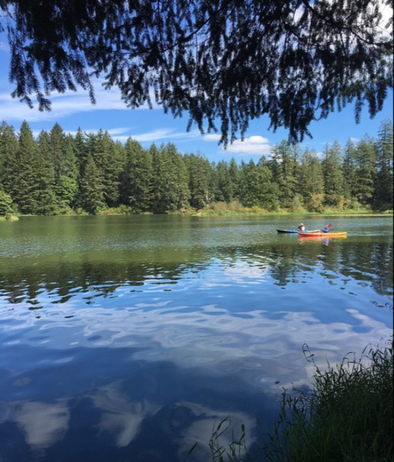
Lake Needs
What is needed to improve water quality?
How can we create lasting change?
What is causing the pollution of the lakes?
Intervention Points for our Lake System
Minimize shoreline erosion.
The shoreline is eroding into the Heritage Park Trail. Without erosion control, Camas will lose access to this amazing hiking trail.
Encourage active monitoring.
The only way we can alert people and be educated to make change is by having active monitoring of our lakes while we are striving for better water quality.
Decrease In Total Phosphorus
Decreasing the 'total phosphorus' (TP) levels requires addressing phosphorus in all layers of the lake from the highly saturated sedimentary deposits at the bottom to the less concentrated phosphorus at the top.
Phosphorus levels in a body of water accumulate slowly from sometimes many different sources. When phosphorus enters the body of water it can cause algae to grow. High levels of phosphorus lead to high levels of algae which depletes oxygen and leads to eutrophication of the body of water.
There are at least 13 inlets into Lacamas Lake including Lacamas Creek. It is important to not only address existing phosphorus levels but through public education and restrictions to prevent future pollution.

An Increase Oxygen Levels
Algae blooms decrease oxygen content in a few ways. When in bloom and floating on the top of the body of water, the algae blocks the sunlight from the underwater plants to grow. This limits oxygen production at the lower levels of the lake.
Algae blooms decrease oxygen levels at night as well by switching from photosynthesis to "respiration". While photosynthesis may slow on cloudy days, respiration does not.
After the algae die they sink to the bottom of the lake and provide a food source for oxygen-depleting bacteria as they decompose and turn to sediment on the lake floor.
Without oxygen, fish and other organisms cannot grow and balance out the ecosystem to keep the algae blooms in check.

























